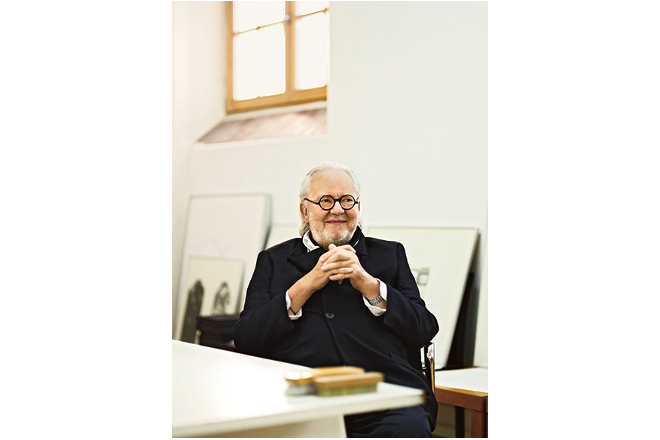Herbert Schultes. Intensity.
Design is the passionate search for the essential nature of objects. Only simple forms permit intense communication between human beings and objects
People often ask me why my designs never go beyond the simplest basic geometric forms. The “Optima” camera with the res sensor is a pure cuboid, the circular forms dominates the “Orbis” lamps, the forms of The “Orion” is an unadulterated cylinder and the kitchen systems display only a square and rectangular surfaces.
My answer to their question is that I follow the creative principles that I believe in. And for me those aren’t primarily aesthetic values and criteria, but ethical ones. I have never said that objects that are designed according to the canon of basic geometric forms look better by virtue of their forms alone, that they are more aesthetically pleasing. I just think they’re better suited for creating a sensibly designed environment, which means a higher quality of life for people. And that’s what I strive for.
My creative credo is a reaction to the sensory overload that we are continuously subjected to. Not only on the street but also inside buildings, we are surrounded by random collection of diverse objects, most of which have been designed in a haphazard manner. The total effect of such surroundings is a perpetual state of visual unease. Clarity, tranquility and a sensible order that provides orientation are lost.
I don’t see that as a primarily an aesthetic problem. It’s deeper anthropological issue. If a human being is to have a high quality of life and a sense of being sheltered and at home in the world, it’s crucial to have a positive atmosphere. But the creation of such an atmosphere is permanently blocked by the complex environment of heterogeneous objects and unsorted information that surrounds us. This leaves a fundamental need of human beings unsatisfied. We can’t escape from this negative atmosphere. It affects us through many channels, and the way we experience and process it is largely subconscious. Moreover, it has a long-term effect on people’s general state of mind.
From the investigations carried out by the social psychologist Mihaly Csikszentmihalyi, we know that every objects that draws our attention initially drains off a certain amount of physical and psychic energy. Because every individual possesses only a limited amount of energy, the natural result of this constant drain is physical and psychic exhaustion – the condition we know today as “burnout syndrome”. In this respect, it can’t be denied that the field of design has anthropological relevance.
That we are not suffering from collective burnout syndrome is due to the fact that pictures and objects that are appropriately designed also transmit positive energy to the viewer. In the ideal case, a certain sense of give-and-take arises in the communicative relationship between human beings and objects- a feeling that Csikszentmihalyi calls the “flow experience”, or a sense of intense motivation. “It’s harmonious experience in which the body and the spirit work together effortlessly and the feeling arises that something very unusual is happening to you”, he says. In the other words, it is an intense relationship between the individual and his or her activity or surroundings –the very pinnacle of communication.
But this kind of intense communication between human beings and objects can take place only if people have established a direct relationship with them. And this, in turn, is possible only if the objects themselves are essential –that is, if there are essential nature has been expressed. Creating this kind of object requires concentration from designer. He or she must express the essential nature of the objects and discard all of their nonessential elements.
Herbert Schultes takes on design challenges of every magnitude. His designs range from innovative ski binding, for example, to a restaurant in a high-speed train for Germany’s railway system, The Deutsche Bahn. Herbert Schultes made his mark with AG, and for many years he was the company’s head designer. In addition to a passion for his creative work, Schultes is committed to fostering up-and-coming young designers. He founded the Industrial Design program at Munich Technical College and taught at the Cologne design schools.














This entry has 0 Comments